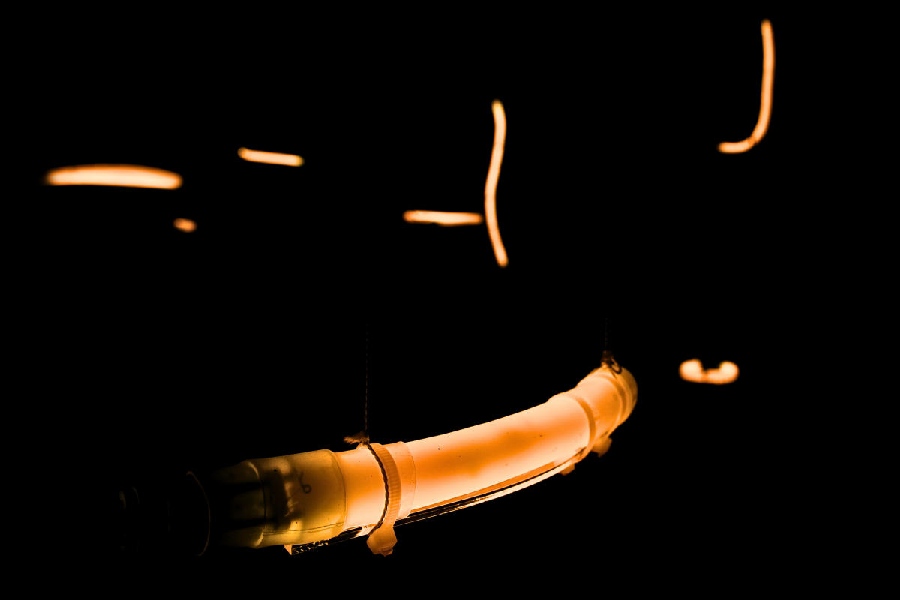When LIFE magazine’s Gjon Mili first showed Pablo Picasso the trick to drawing with light, the father of Cubism was so mesmerised that he put away his paint and brushes for a while. Light graffiti — it involves the use of a slow-shutter camera and a source of light — can be hypnotic because it captures fluidity and motion even in still photographs. If the eye follows the path of light, it seems like the painting is being redrawn live, time and again. Yet, even as it creates a sense of drama, the viewer is kept outside the ambit of the actual action. Not so in Shaped in Fragments: A Study in Light [held recently at A.M (Art Multi-disciplines)], an installation by Paul Holmes.
Amidst the darkened gallery illuminated by streaks of light, the viewer is led right to the middle of the action. Holmes attempts a figure study using lengths of glowing LED tubes. Each part of the human body is measured clinically and represented through a corresponding stretch of tubing. Parts of this glowing skeleton, so to speak, are spread out around the room — it is difficult not to draw parallels with the battlefields of Gaza and Ukraine — as if in a morgue, ready for the forensic pathologist to closely examine.
But this is not a crime scene. Rather, it is an opportunity to inhabit the body of another (as well as the mind of the artist) and rebuild the figure, as if putting together blocks of Lego. Every time the viewer moves inside the gallery, the perspective shifts and the figure changes shape. The pieces often come together in a way that is disjointed and ill-fitting but, like Frankenstein’s monster, the somewhat ‘grotesque’ creature that the viewers put together in their minds is eloquent and capable of kindling deeper questions about the illusory nature of the corporeal form.










